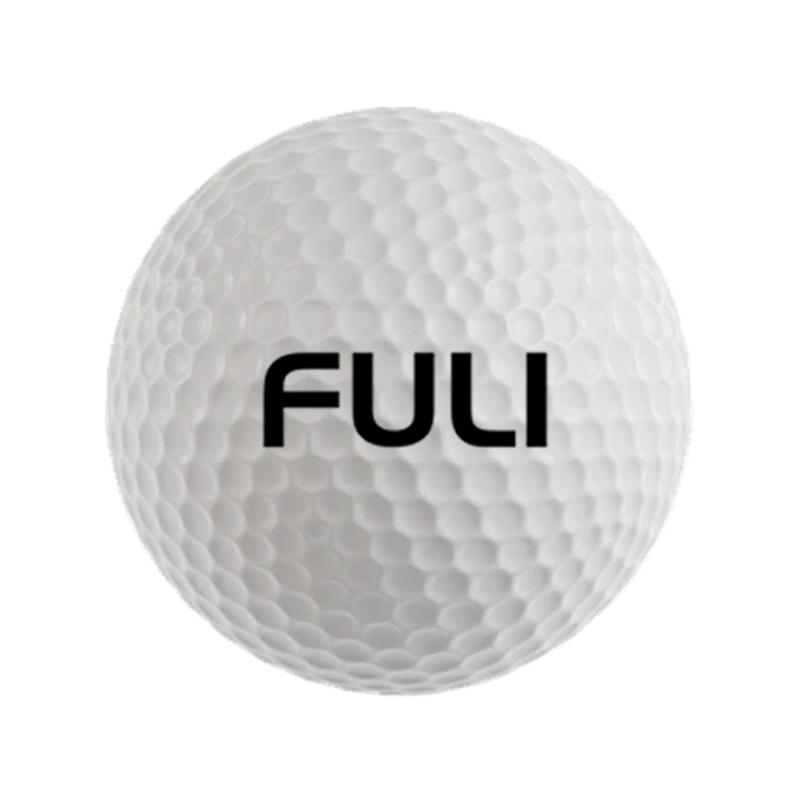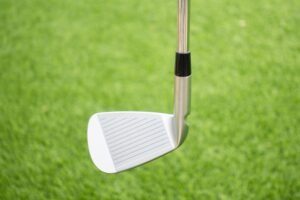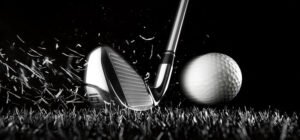
I hope you enjoy reading this blog post.
If you are looking professional golf manufacturer.
Historical Development Of Hardness Classification Of Golf Balls
October 30, 2025
As a shining pearl in the history of sports, the origin of golf can be traced back to hundreds of years ago. Over the long years, golf has undergone numerous changes and evolvement. Ball production materials from the original to fine, the process from rough development to exquisite. The closely related hardness classification has gradually become detailed and perfect from vague.
Golf balls with different hardness show completely different characteristics in several key dimensions such as hitter feel, flight distance and spin control. Bring a variety of different shot experiences to the golfer. Accurately meet the diverse needs of all types of players from beginners to professional masters.
The Beginning Of Its Origins: The Era Of Feather Golf Dominance
Going back to the early days of golf, “feather golf” is an iconic product of that era. From the 15th century until 1848, feather golf dominated golf. It is made by an ingenious but complicated process: fine leather is carefully selected, and small bags are cut and sewn. Then the specially treated, wet goose feathers are carefully stuffed in. After filling, wait for the goose feathers to dry thoroughly. The soft goose feathers become firm and hard, and the stuffed leather bags are transformed. Become a hard, durable golf ball.
Under the technical conditions of the time, the feather golf ball could easily hit a respectable distance of 150-175 yards. However, the production process has strict material requirements and complex processes, resulting in high costs. To make matters worse, its durability is extremely poor. Each ball will be damaged after about 20 hits and can no longer be used. This has set up numerous obstacles for the wide dissemination and promotion of golf.
From the hardness level, the overall hardness of goose feather golf ball is higher. The reason is the denseness and filling of dry goose feathers. When the player swings the club to hit the ball, the strong touch is quickly transmitted to the hand, like hitting a stubborn stone. To hit the ball the perfect distance. Athletes need to do their best to use all the muscles in their body to work together. At the moment of hitting the ball, the hand is subjected to a strong reaction. The shock travels up the arm and can even make the arm numb.
Moreover, it is subject to the material characteristics and technological level at the time. The flight performance of the feather golf ball is highly uncertain, and the flight trajectory is difficult to accurately control. Full of randomness, every swing is like an unknown adventure.
Innovation Breakthrough: The Sudden Rise Of The Gutta Rubber Ball
1848 was a major turning point in the development of golf. Gutta rubber ball came out and completely subverted the traditional pattern of golf. Guta gum is derived from the SAP of the heart fruit tree in Malaysia. After extraction, drying and other processes, it becomes a new raw material for making golf balls. The surface of the original Gutta rubber ball is smooth and flat, but the actual flight performance is far inferior to the feather golf ball.
Fate is full of strange twists, players in the process of using the unexpected discovery. The flight performance of the ball is improved significantly after the surface of the ball is rough and worn by many shots. This discovery sparked inspiration for golf ball manufacturers, who began to consciously finish the gutta rubber ball rough. This initiative became the beginning of the modern golf ball surface indentation design.
Compared with feather golf balls, the production cost of Guta rubber balls is greatly reduced. Excellent durability, allowing more people to participate in golf. However, in terms of hardness, the texture of Gutta rubber balls is hard and relatively simple. Players can feel crisp feedback when they hit the ball. The moment the ball makes contact with the club, it seems to be urged by an invisible force and can’t wait to fly away.
However, the flight path of this kind of hard ball is easily disturbed by external factors such as wind direction, and the rotation control performance is not ideal. Especially when playing the short game. Even with a delicate touch, it is difficult to produce the desired spin of the ball. Precise control of the landing point brings great challenges to the fine operation around the green.
Milestone: The Stunning Unveiling Of The Haskell Ball
The invention of the Haskell ball in 1898 was epoch-making in the history of golf. Haskell balls are designed with an unprecedented internal structure. The interior is made of tightly wound rubber wire to create a flexible core, and the exterior is carefully coated with balata gum. This subtle design gives the ball exceptional elasticity and excellent flight performance. It can convert the energy efficiency of the moment of hitting into flight power, so that the ball can easily break further.
The birth of the Haskell ball laid a solid foundation for the development of subsequent golf balls, and subsequent multi-layer winding structural balls were deeply influenced by its design concept. In hardness control, Haskell ball has some flexibility. Manufacturers can precisely adjust the hardness of the ball by adjusting the winding density of the internal rubber wire and the material of the external gum. For powerful players who want to hit the ball for distance, the harder Haskell ball is the best partner.
These players, when they hit the ball at full swing, can actually feel the ball as if it were ejected by a powerful spring. When the club makes contact with the ball, the power is transferred quickly. It is as if you can hear the whistling sound of the ball being launched at high speed, and the powerful sense of sudden explosion makes people’s blood boil.
However, the hard ball has its limitations in short strokes because of its high hardness. When the ball makes contact with the club, it is difficult to generate enough spin, and players often struggle to accurately control the rolling distance and landing point of the ball around the green. In contrast, the softer Haskell ball is softer for hitters. When performing delicate operations such as short cuts and putts around the green, it can easily produce backspin. It provides strong support for players to accurately control the landing point and rolling distance of the ball.
When the player uses the soft ball for short stroke operation, the “stickiness” between the ball and the cue can be obviously felt. You can control the power and Angle of the ball more finely. The club seems to be an extension of the body, allowing the ball to stop in the desired position. Brings a strong sense of control.
Diversified Expansion: The Rise Of Solid Ball And Double Ball
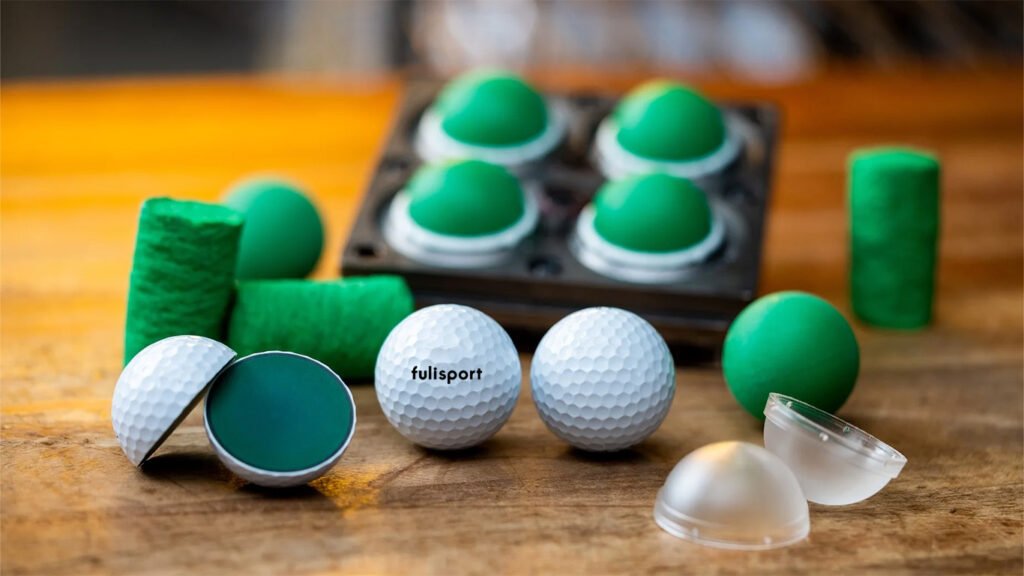
In the 1960s, the first solid golf ball came out. It opened a whole new chapter in the development of golf. Since then, the solid ball family has continued to grow, and a variety of types such as double-layer balls and multi-layer balls have been derived.
A two-layer sphere, for example, usually consists of a larger proportion of the spherical center and a relatively thin spherical shell. The ball center is generally made of materials such as rubber or plastic with higher hardness. Give the ball strong support and initial speed. The shell is made of a relatively soft material, designed to give the ball a better touch and a certain spin performance. This structural design makes the double ball show a unique advantage when hitting, and can get faster speed in an instant. The flight distance is considerable, and the reverse rotation during flight is relatively small. This is very attractive for players who are looking for striking distance.
In terms of hardness classification, the double layer balls pass through different combinations of the core and shell materials. Create different hardness levels of products, common hardness levels are 90-105, 80-90 and so on. In general, the higher the hardness value, the harder the ball, the more difficult the flight direction control. The energy transfer is direct and efficient when hitting hard ball, and the interference is small by the small deviation of the hitting Angle. However, once the Angle deviation is large, the flight direction deviation will be more obvious, and the fault tolerance rate is lower.
When a player uses a high-hardness double-layer ball to tee off, he can clearly feel the strong and rigid collision between the club and the ball. The force acted on the ball without hindrance, and the ball flew out at a very fast speed like a shell out of the chamber, and the speed of the instant explosion was shocking. However, when making accurate shots, due to the high hardness of the ball, the batting skills and accuracy are demanding. The slightest mistake may cause the ball to deviate from the intended target. The flight path of the lower hardness of the double ball is more controlled by the hitter. At the moment of hitting, the softer ball produces more deformation. It acts as a cushion to absorb some of the power of the ball, making the direction of the ball more in line with the batter’s expectations.
For beginners, because of the batting power and skills to be improved, the lower hardness of the ball is a good friend. When beginners use the soft double ball to hit the ball, they will be surprised to find that the ball is more “obedient”, and the deformation of the ball at the moment of hitting the ball not only reduces the sensation of hand shock. Make the batting process more comfortable, but also let the novice intuitive feel the impact of subtle changes in the batting action on the direction of the ball. It is helpful to grasp the key points of batting skills quickly and gradually improve the technical level.
The Pinnacle Of Science And Technology: The Exquisite Design And Wide Application Of Multi-layer Balls
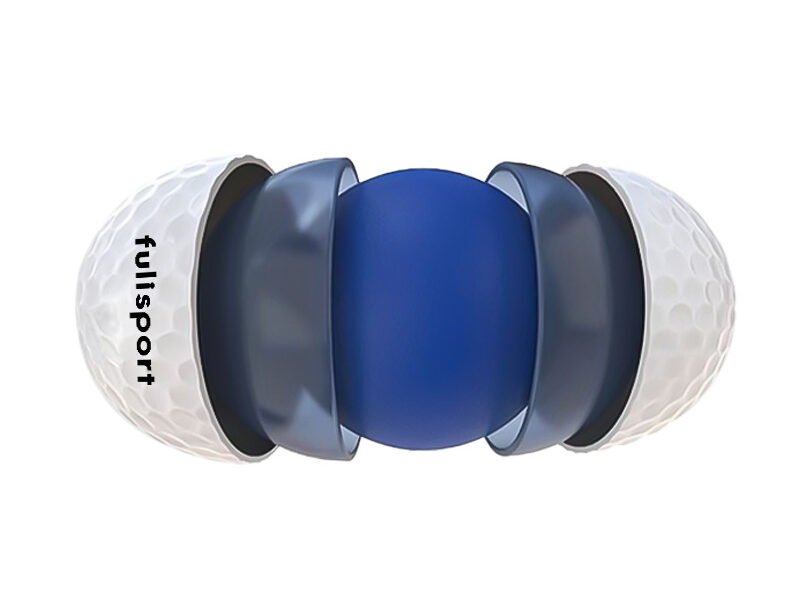
With the rapid development of science and technology, the multi-layer ball came into being and has become a new generation of darlings in the golf family. The design concept of the multi-layer ball is exquisite, for different strokes. Clever use of different layers of material characteristics, all-round, multi-level to achieve the best batting effect.
The center of the ball is designed to harness the power of the opening drive. Push the ball out with maximum energy to achieve ultra-long distance flight. The middle layer gives full play to its own characteristics when vigorously batting, providing stable and powerful support for batting. The shell is focused on providing the player with the best feeling for the shot. At the same time, in the fine operation of the half swing, the cut and the putter. Accurately generate the right roundabout to ensure that the ball stops exactly where the player wants it to.
In terms of hardness, multi-layer balls bring diversity to the extreme. By carefully selecting materials of different hardness in the ball center, interlayer and shell. The manufacturer precisely adjusts the thickness and proportions of each layer. Like a skilled craftsman, it accurately mixes a variety of products with different hardness. Meet the diverse needs of different scenarios and different levels of players.
For example, some high-end multilayer balls add metal powders such as titanium, tungsten and magnesium to the core and shell. The addition of these metals not only increases the strength of the ball, making it more durable. It also subtly alters the weight distribution inside the ball, which has a profound effect on the ball’s hardness and flight performance. For professional players, they rely on a wealth of experience and a deep understanding of golf. According to their own unique batting style and technical characteristics.
Accurately select the most suitable for their own hardness of the multi-layer ball, in the fierce competition to give full play to the best level. When professional players kick off with a hard, multi-layered ball, the instant burst of power makes them motivated. The ball is pushed out at a very high speed under the action of strong elasticity and rigidity. Flying away like an arrow from the string, the visual impact of long-distance flight amazes the opponent. But the hard ball faces a challenge when hitting the ball. Because the ball is so hard, it requires a subtle touch around the green. It is difficult for players to spin and roll the ball through subtle strokes, which requires great technical accuracy.
On the contrary, the softer multi-layer ball has obvious advantages in short rod operation. It can easily produce reverse spin, so that the ball stops precisely in the target position. When a professional player uses a soft, layered ball to hit a short shot, he is like a well-crafted artist. With exquisite technology to precisely control the rotation and landing of the ball, every shot is like a delicate artistic creation. Watch the ball roll gracefully on the ideal path and come to a steady stop in the ideal position. It will give you a sense of satisfaction and accomplishment.
Specification Lead: Hardness Considerations Under USGA Standards

In order to maintain the fairness and standardization of golf, ensure that every player can compete in a fair and orderly environment. The United States Golf Association (USGA) sets strict and detailed standards for the design and manufacture of golf balls. Golf balls should be approved and approved for use. Specific requirements must be met in key aspects such as weight, size, ball symmetry, initial velocity and total distance. In terms of hardness, although the USGA does not directly give a specific hardness value range. But pass the performance requirements on the ball. Indirectly, it has a profound impact on the hardness design of the ball.
For example, the initial velocity and overall distance of the ball are specified. Manufacturers are required to design the hardness of the ball. The elasticity and material properties of the ball should be considered comprehensively. Only in this way can we ensure that the ball is within the framework of the rules. To provide the majority of golfers with high quality, stable, good batting experience. To ensure the sustainable and healthy development of golf on a fair and just track.
Look back to the past, from the very beginning of feather golf. Today’s wide variety of modern golf balls has a detailed hardness classification. The evolution of golf has seen rapid advances in materials science, the peak of manufacturing processes, and the increasingly diverse needs of players. The continuous refinement and improvement of hardness grading has built a bridge to the wider world for golf. So that players of different levels can find the best golf ball for their own.
It is this precise match that greatly stimulates the enthusiasm and potential of the players. It has effectively promoted the widespread popularity and vigorous development of golf in the world. Let this ancient and elegant sport shine more brightly in the new era.
FAQS
How do I choose the right golf ball for my skill layer?
Beginners should start with two-layer balls for ease of use and affordability. Intermediate players might benefit from three-layer balls for better control.
Advanced players can explore four or five-layer options to enhance their performance.
Are more layers always better?
Not necessarily. While more layers can offer advanced performance features, they may not be suitable for every player.
Beginners might find multi-layer balls harder to control, while more experienced golfers can benefit from the added complexity.
What is Fuli lead time?
Usually, we ship orders in 2 weeks. But it will take a little longer if we have the heavy burden of production tasks. It also takes more time for customized products.
Can the weather affect the choice of golf ball?
Absolutely. In colder weather, a softer ball might provide better feel, while in warmer conditions, a firmer ball might maintain distance better.
Additionally, wet conditions may call for balls that offer better traction and control.
How often should I change my golf balls?
Golf balls should be replaced if they show visible signs of damage (scrapes, cuts) or if you notice a decline in performance.
Regular players may want to change balls every few rounds, while casual players can go longer.
Leave a Reply
Your email address will not be published. Required fields are marked *
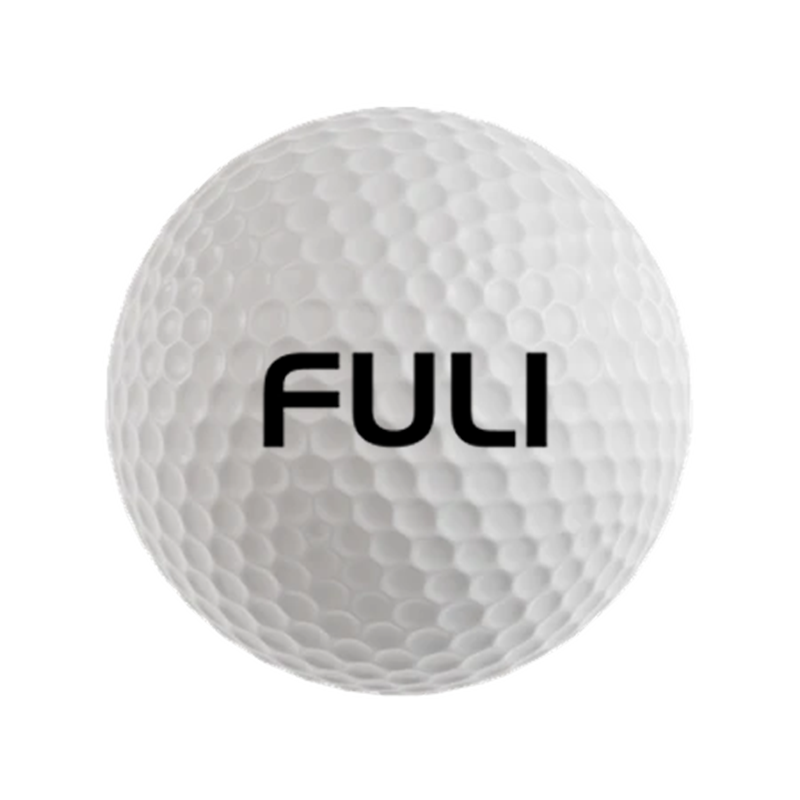
Are you looking for
GOLF BALL?
Offers Suitable Golf For Wholesalers And Professionals

